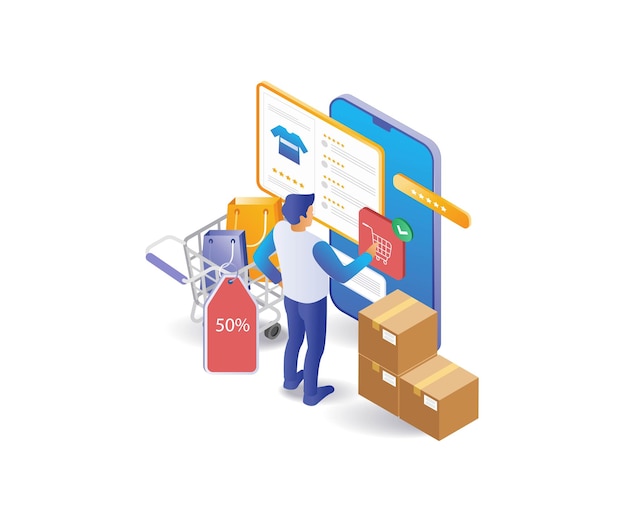Missing Link Between Marketplace Aggregators and D2C Sites: Order Management Software That Talks to Both

Modern retailers sell through a dizzying array of channels – from brand-owned websites and physical stores to third-party marketplaces like Amazon, Flipkart and Myntra. Yet far too often these channels operate in silos. Orders from one channel aren’t automatically reflected in another, so inventory records get duplicated or out of sync. The result is chaos: stockouts on one channel while items sit idle on another, orders getting delayed, and customers getting frustrated.
70% of businesses report losing customers due to stockouts. By the same token, poor inventory planning means lost sales and forced markdowns. Analysts estimate that mismanaged inventory can cost businesses a staggering $1.1 trillion annually. The only way out of this mess is a unified Order Management System (OMS) that truly bridges every sales channel. A modern OMS gives you a single platform where orders from Amazon, Flipkart, your D2C site or even a brick-and-mortar POS all flow together.
This blog explores why an integrated OMS is now mission-critical for multichannel retailers, how it solves the fragmentation problem, and what features you need to beat fulfilment bottlenecks.

Accelerate deliveries and reduce costs using Ginesys OMS with intelligent order fulfilment rules.
Fragmented Fulfilment is Killing Omnichannel Efficiency
Retailers often treat marketplace sales and D2C website orders as completely separate. Marketplace orders might land in one portal or basic inventory system, while website orders go into another. Without integration, each channel develops its own data silo. This leads to duplicate inventory records and overselling. You might, for instance, sell the last widget on Amazon without realizing it’s already gone on your website.
Unsurprisingly, these disconnected processes become very labour-intensive and error prone. Teams end up spending hours each week reconciling between systems. One industry blog notes that 30% of employees’ time can be eaten up by manual data entry and chasing down orders in fragmented systems. Not only is this costly but it also kills agility. By the time a manager pieces together last month’s sales from multiple reports, the insight is stale.
Fragmented systems create a cascade of problems: inventory discrepancies, overselling, and fulfilment bottlenecks. Without a unified order view, it’s nearly impossible to make real-time decisions on inventory or fulfilment.
Selling with Marketplace Aggregators: A Double-Edged Sword
Selling on big marketplaces like Amazon, Flipkart and Myntra offers huge benefits in traffic and scale, but it also brings tough operational demands. These platforms enforce strict Service Level Agreements (SLAs) on shipping speed and order quality. For example, Amazon guarantees one- to two-day shipping for Prime customers. If sellers miss that promised delivery window, Amazon records a “Missed Fulfilment Promise”, which can hurt seller ratings and even lead to penalties.
The danger comes into sharp focus during high-volume events like flash sales or promotions. When orders suddenly spike, an unprepared backend can quickly collapse under the load. Without real-time inventory updates, sellers run a high risk of overselling: they don’t immediately see that stock is depleted on one platform while new orders are still coming in.
In fact, overselling on major marketplaces like Amazon or Walmart can directly trigger cancellations, shipping delays and account penalties. Thus, the same marketplaces that give you access to millions of shoppers will cut you off if you cannot meet their speed and accuracy standards.

Connect your D2C site, marketplaces, and retail stores with one integrated ERP from Ginesys.
Opportunities and Operational Complexities in D2C Platforms
Direct-to-consumer (D2C) websites present the opposite side of the coin. A brand’s own ecommerce site gives total control over branding, customer experience and pricing. You capture all the customer data and full profit margins. D2C models let enterprises take full control of their branding, customer experience and sales processes while eliminating intermediaries. In practice this means higher margins, richer first-party data and more engaging brand experiences on your own terms.
However, running a D2C channel still needs its own inventory planning, order processing and customer support infrastructure. In effect, it becomes another selling channel that must coordinate with the rest of the business. Without integration, your D2C site can end up competing for stock with your marketplaces. A popular item might sell out on your site just as warehouse stock is promised to Amazon customers. These mismatches quickly turn into stockouts and shipping delays on either side.
The impact on customer loyalty can be dramatic: 69% of consumers say they’re less likely to shop with a retailer again if their order is more than two days late, and 16% will abandon a brand entirely after just one incorrect delivery.
How Fragmented Retail Systems Undermine Scale and CX
Legacy, siloed tech stacks hit retailers where it hurts: the bottom line. Every disconnected system adds overhead and error. Employees may have to manually update inventory counts in multiple places, which wastes time and inevitably leads to mistakes. Unmatched orders, double entries or forgotten updates all mean returns, cancellations and disappointed shoppers – revenue leakage that adds up.
Industry research quantifies how steep the cost can be. One analyst reported that unpredictable inventory (over- or under-stocks) and avoidable returns together wipe out about 11.7% of gross revenue. Meanwhile, operational inefficiency piles on top. The hidden toll is also in missed opportunities. Separate reports for each channel mean demand forecasting is guesswork. Thus, you might be effectively shrinking your growth ceiling by keeping systems disjoint.

One Platform for Every Order: The Case for a Unified OMS
A modern OMS breaks down these silos by connecting all sales channels to a single platform. All orders – whether from Amazon, your Shopify site, a brick-and-mortar POS or even a B2B storefront – funnel into one system. From there, the OMS applies consistent fulfilment logic and keeps inventory in sync everywhere. This centralized approach means there is one source of truth for every order and every stock movement. The moment a sale is captured, the OMS instantly updates inventory counts, triggers packing and shipping workflows, and notifies customers of status changes.
Crucially, this also creates a consistent customer experience. From the buyer’s perspective, every order is treated equally no matter how it was placed. They get accurate delivery promises and status updates. By automating fulfilment and communication across channels, a unified OMS helps ensure consistency and customer trust in the process.
Making Multichannel Work: What Sets a Great OMS Apart
A next-generation multi-channel OMS typically includes the following capabilities.
1. Automatic Channel Synchronization
The OMS continuously syncs product listings, inventory and orders across every channel. When an item sells on Amazon, on your website or in-store, the stock count is updated everywhere in real time. Returns initiated on any channel automatically feed back into inventory availability as well.
2. Rule-based Order Routing
You can set fulfilment rules and have them executed automatically. For example, orders might route to the nearest warehouse or store with inventory, or prioritize shipments based on order size or customer loyalty status. Automated routing reduces shipping costs and speeds delivery.
3. Real-time Order Tracking and Notifications
Modern OMS platforms offer end-to-end tracking. The system sends automated email/SMS updates for every stage – from order confirmation to dispatch to delivery – so customers always know where their package is. Real-time visibility dramatically cuts “Where is my order?” support calls. Industry research shows that implementing better tracking systems can reduce delivery delays by over 50%.
4. Analytics and Dashboard Reporting
Unified data means unified insights. A good OMS provides dashboards for key performance indicators (KPIs) such as order fulfilment time, perfect order rate, and return trends. You can see, for example, which fulfilment centre is missing its SLA or which product is causing the most returns. These analytics make it much easier to spot bottlenecks or changing demand patterns before they escalate.

Simplify multichannel fulfilment with Ginesys OMS — automate order routing and real-time inventory sync.
Enabling Fulfilment Agility and Faster Delivery
Beyond integration, an OMS can actively accelerate fulfilment and cut costs. One way is intelligent order routing. The system uses real-time inventory data to send each order to the best fulfilment point.
For example, if the closest warehouse is out of stock on a given item, an automated system can instantly reroute the order to another location that does have it in stock. This avoids unnecessary delays or backorders and ensures faster shipping.
A unified OMS also ties directly into the logistics ecosystem. It can connect with third-party fulfilment providers (3PLs) and warehouse management systems (WMS). When an order comes in, it’s automatically sent to the 3PL with packing details, and the 3PL’s system reports back on shipping status.
By cutting out manual hand-offs, an integrated OMS slashes the order-to-ship time. Retailers can meet tight marketplace SLAs (like same-day or next-day delivery) without burning extra overtime. In fact, automating these processes means stores and warehouses are utilized more efficiently, often saving on shipping and labour.
The Engine Behind Seamless Selling: Ginesys OMS
Ginesys offers cloud-based retail ERP and OMS solutions built specifically for Indian omnichannel businesses. With a suite of integrated tools covering POS, ERP, ecommerce integration, and order management, it enables effortless coordination between your online and offline retail operations.
At the heart of this ecosystem is Ginesys’ powerful cloud OMS. It acts as the central hub that connects your D2C webstore, marketplaces, and physical stores into a single, unified backend, ensuring end-to-end visibility and fulfilment agility.
- Real-Time Inventory Sync Across Channels: Keep inventory levels in sync across your marketplaces, D2C websites such as Shopify, Magento, WooCommerce, and offline stores. When a sale happens on any channel, stock is instantly updated everywhere, helping avoid overselling or stockouts.
- Marketplace and Ecommerce Platform Integrations: Ginesys provides ready plug-and-play integrations with major Indian marketplaces and ecommerce platforms. This eliminates the need for third-party tools or custom development, accelerating your go-live time and reducing IT overhead.
- Unified Order Processing and Routing: Orders from all sales channels are routed through one OMS, where logic-based rules decide the most efficient warehouse or store for fulfilment.
- Returns Management Built-In: Simplify reverse logistics with integrated returns processing. Returns are automatically captured from marketplaces, and the system updates stock or flags items for inspection based on custom rules.
- Centralized Analytics and Reporting: Ginesys offers unified dashboards to track order volumes, returns, fill rates, and channel performance—all in one place.

Make every order count — manage, fulfil, and track from a single dashboard with Ginesys.
The future of retail isn’t about choosing marketplaces instead of D2C, but about mastering through smart integration. A unified OMS ensures that no order is lost in the shuffle, whether it came in on Amazon Prime or via your own checkout page. Retailers that invest in this kind of integration are far better positioned to scale profitably: they satisfy customers with faster delivery and fewer mistakes, while gaining the agility to expand into new channels.
Book a demo to discover how Ginesys unifies order and inventory management across channels.
